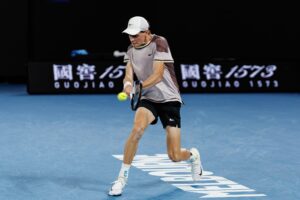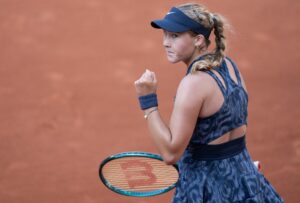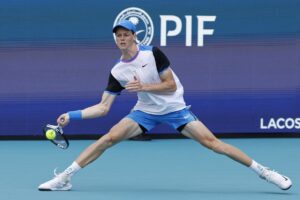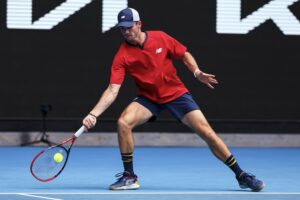With this year’s US Open now done and dusted, the good news for tennis fans around the world is that they don’t have long to wait before another opportunity to see the best men’s tennis players in the world in action. The inaugural Laver Cup will be held in Prague from the 22nd-24th September, and it will adopt a Ryder Cup-style set up where a team of six European players takes on a team of six players from the rest of the world, with each team led by a captain. So far, the impressive list of players involved includes Roger Federer, Rafael Nadal, Juan Martin Del Potro, and Denis Shapovalov. Nonetheless, despite the tournament being widely publicised, with a big promotional event held in February, the reception in the wider tennis world has been indifferent so far. Why has this been the case? Should tennis fans be more excited about this tournament than they are? It is clear that the tournament is unique, compared to other tournaments around the world, not simply because of its team structure. Perhaps a closer look at the tournaments’ structure, teams, and context will offer a better idea as to whether it is worth the hype.
The Structure
The tournament’s structure is confusing, at best. The tournament will encompass both singles and doubles matches, featuring the players in each team. Every player on each team must play at least one singles match, and four out of the six players on each team must play a doubles match. Each doubles pairing, however, can only play together once, unless the overall team score is tied after the three days and a single-set deciding doubles match must be played. The matches will be best of three sets, but a so-called “super tie-break” (or 10-point tie break) will decide the match if the score is at one set all. I hope you’re still with me and that you haven’t clicked away, because things are about to get a little more confusing. Each match-win will be worth one point on the first day, two points on the second day, and three points on the third day. The team with the most points at the end of the three days wins. The unique points-system means that both teams have a chance of victory until the final day, and it also renders the first day’s results as being relatively meaningless. In terms of structure, the tournament resembles a series of big-name exhibition matches.
The Teams
Both teams are captained by two great legends of the game. Bjorn Borg will captain “Team Europe,” and his former great rival John McEnroe will lead the somewhat oddly named “Team World.” The captains picked their final two team members just after the conclusion of the US Open, with the rest of the team having been chosen based on their ATP ranking following Wimbledon. Team Europe goes into the tournament as the favourites, boasting Federer, Nadal, Dominic Thiem, Marin Cilic, Alexander Zverev, and Tomas Berdych in their ranks. Including Borg, Team Europe has an accumulated total of forty-seven Grand Slam singles titles, compared with Team World’s eight, including John McEnroe. Where Team Europe excels in Grand Slam titles, however, their opponents excel in terms of entertainment value. With Nick Kyrgios, Denis Shapovalov, Juan Martin Del Potro, John Isner, and Sam Querrey on his team sheet, John McEnroe has the perfect mix of excitement, power, and showmanship. Shapovalov, Kyrgios, and Del Potro will look to get the crowd on their side, and on their day, they can challenge the even likes of Federer and Nadal, especially considering the tournament’s format. It will be interesting to see how the two legends man-manage their players, especially in light of John McEnroe’s high profile criticism of Nick Kyrgios’ attitude, and Bjorn Borg’s lengthy absence from the game. Moreover, none of the players will be used to the tournament’s new format, which may level the playing field and ensure that we get some good battles throughout the three days.
The Context
“Context” is a bit of an abstract word, but in this case we are talking mainly about the tournament’s scheduling and accessibility to fans. The tournament falls awkwardly between the Davis Cup semi-finals and the beginning of the East Asian hard-court season, which features the Shanghai Masters and the China Open. It contradicts complaints from players about the intensity of the ATP tour. If the tournament is to be a long-term project, the ATP will most probably be more forceful in their handling of player complaints about scheduling in the future. Furthermore, although tickets are all but sold out for the event, more could have been done to make it accessible to the wider public. For instance, a three-day ticket in the Category 4 “nosebleed seats” cost a whopping $180. Several sections of the lower tier of the sports hall were not even made accessible to the general public, the tickets presumably going to sponsors, and a seat in the middle section of the sports hall for three days would have cost approximately $476, according to the tournament’s website. It is understandable, with the calibre of players on offer, that we can expect elevated ticket prices. Nevertheless, the tournament could have been a great opportunity to engage more people in tennis, and offer people from tennis clubs around Europe the chance to go and see their idols. Instead, it seems as though the tournament is appealing to wealthier tournament-goers, as opposed to the rest.
In many ways, the Laver Cup resembles the big money, brash, International Premier Tennis League, launched in 2013. Its format and structure look to set it apart from the likes of the Davis Cup and other ATP tournaments, but it lacks the tradition, accessibility, and style of tennis tournaments around the world. The Davis Cup is special because it maintains traditional elements within the game, such as best of five set matches and consistent scoring systems, as well as engaging the crowd. Do we really need another tournament, which will try and compete with it and, in my view, fail like the IPTL? I don’t think so.
Main Photo:
Embed from Getty Images






